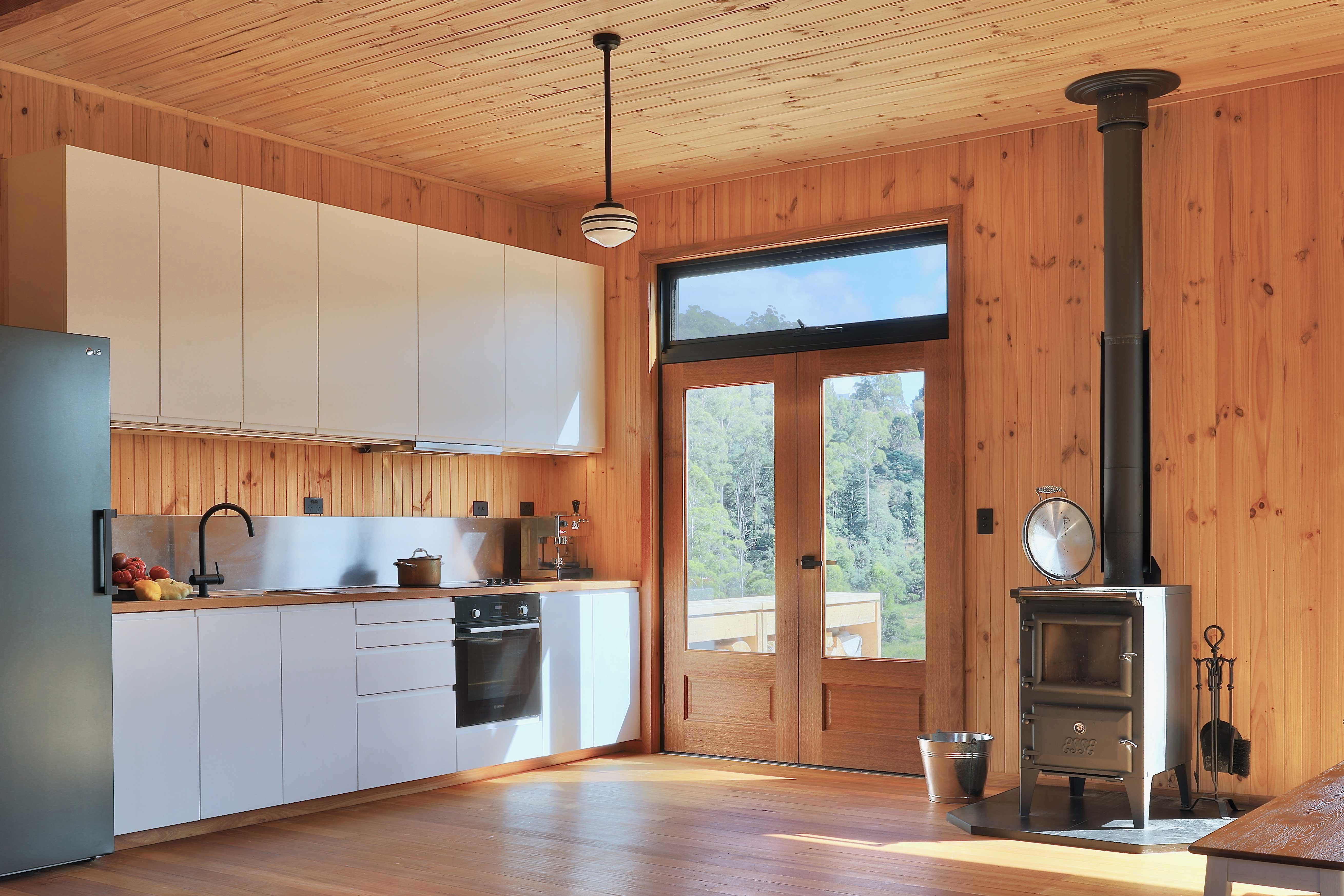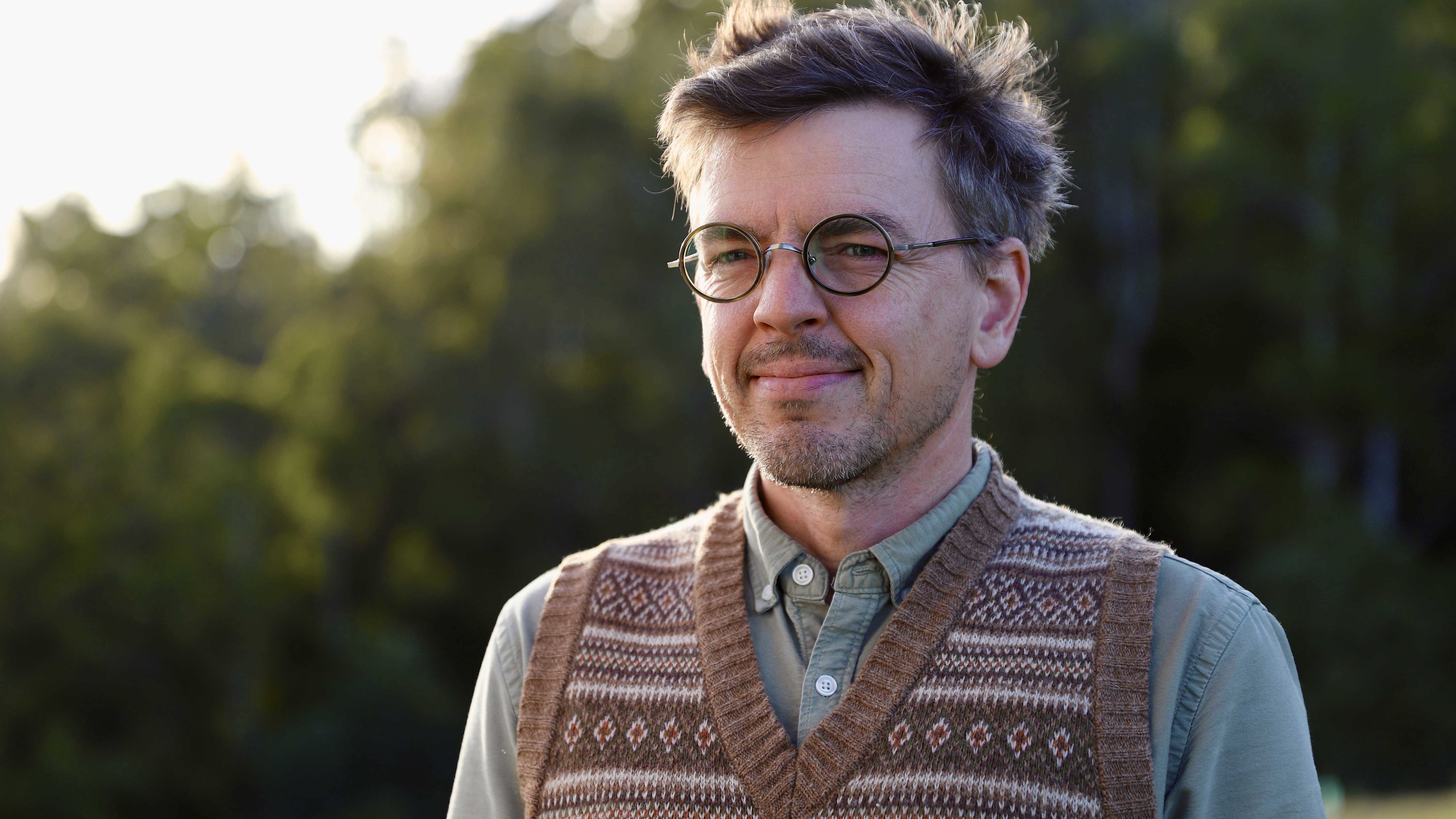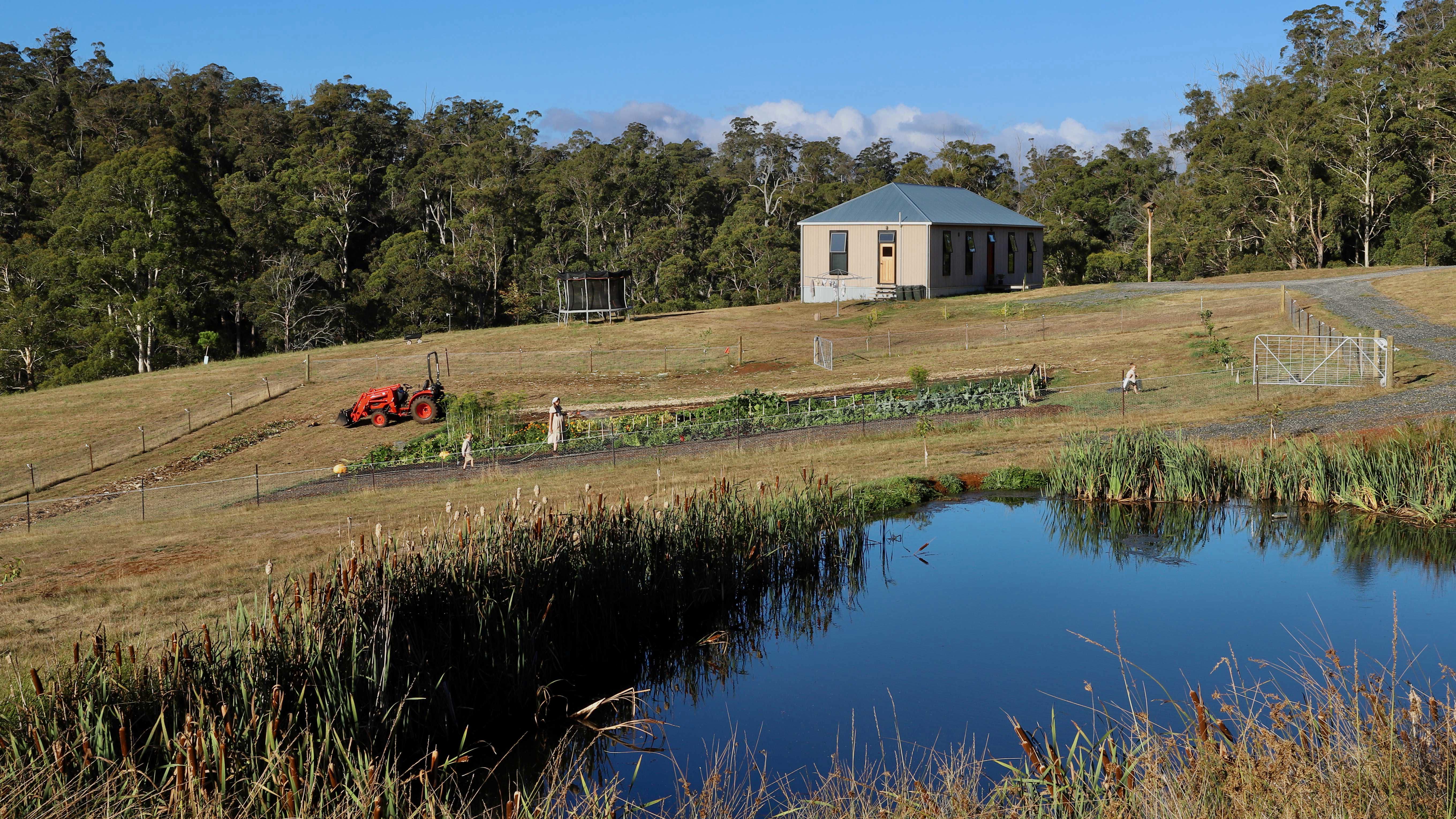At the beginning of last year, Tasmanian architect Jiri Lev was a novice builder, with no hands-on experience in construction.
Yet, in the space of six months, he was able to build his own home for the modest price of $150,000, about a third of the cost of a standard new home.
Lev is on a mission to prove that housing can still be accessible and affordable in Australia.
READ MORE: Why 'shouses' are surging in popularity

He designed the plans for his northern Tasmanian home himself, with simplicity and ease of construction in front of mind.
Now, he's made the plans free and accessible to all as open source documents, with the hope others will share in his vision.
Lev's 120-square metre home was built with simple materials - about 90 percent of which were sourced from within the state - including hardwood for the floors, pine wood and Australian BluScope steel.
"You will save money and lead time if you use local," Lev said.
Building the home with no experience was "surprisingly easy," Lev said, adding it had nothing to do with him being an architect.
"Obviously, it's an advantage to be an architect in terms of knowing the design side of things, and the regulations, but I didn't know anything about building," Lev said.
"I had to learn everything just as anyone else would."
READ MORE: The Aussies buying abandoned houses in Japan


While the thought of building their own home could seem terrifyingly complex to a lot of people, most people should be able to follow his design, Lev said.
The traditional structure of Lev's "Tasmanian Homestead" avoids some design methods used in modern construction, such as roof trusses, which require a crane and multiple people, Lev said.
Instead, Lev's design favours the same building techniques which would have been used by our forefathers to build their own home.
"I'm not trying to reinvent the wheel," Lev said.
"It's mainly about reminding people what the wheel is. I'm using design principles that we've had in Australia for a couple of hundred years.
"It's designed so it can be built step-by-step, and an average able-bodied person can put everything together.
"That's just how houses were traditionally built by our forefathers - brick-by-brick or stick-by-stick."
Lev said he used online resources such as YouTube to research how each step of the building process was done.
"Taking it one step at a time, it was surprisingly easy, that's why I am so keen on dragging people down this path," he said.

Lev did get help from tradies to do the plumbing and electrical work, but, even so, the cost of building the home remained relatively low, he said.
"I had a plumber and an electrician, those trades you have to have," Lev said.
"They were included in the budget as well as the septic (system) - so all up it was $150,000, plus my time."
The Tasmania Homestead design minimises the use of chemicals and the wood on the walls is left untreated. Natural oils are used to prevent staining on the hardwood floors.
Sustainable features are also included, such as a unique "convection door" designed by Lev, with a top panel which can be opened to allow free flow of heat during winter.
Lev said the open plan design of the home meant it would be more suitable for rural, rather than suburban settings.
"It's really designed for a more rural setting where you don't have so many privacy constraints," Lev said.
"It's suitable for people who might have bought a cheap block of land because they can't afford to live in town."

Lev said he was passionate about traditional, beautifully-proportioned homes, and it was an easy decision to make his plans accessible and open source.
"Not everyone can afford to build a house these days. So if I can cut $15,000 - $20,000 off their expenses by providing something for free, why wouldn't I? It doesn't cost me anything," Lev said.
However, anyone accessing his plans would need to employ a local draftsman to make sure the design met local requirements, such as shading, Lev said.
Lev said his homestead would be well-suited to eco villages or government social housing schemes, and could even help renters enter the market.

"Housing doesn't have to be a cookie-cutter type thing, all it requires is a pinch of imagination," Lev said.
"We have so many able-bodied men, kind of demotivated, maybe sitting in social housing with families. I think many of them are definitely keen to work, but maybe there are obstacles in them finding work.
"Imagine if these people could build their own homes for their families. While doing that they could learn the trade and it could start their career as well."
Lev said he hoped his work would inspire others to see what was possible.
"Even in today's world it's actually quite simple and accessible to build your own home.
"It's not only something that was done in the 50s - it's just as relevant today, and it can look good."
Contact reporter Emily McPherson at emcpherson@nine.com.au
